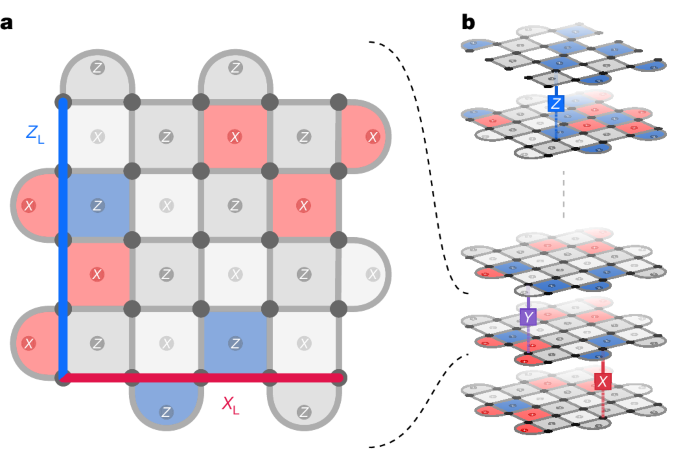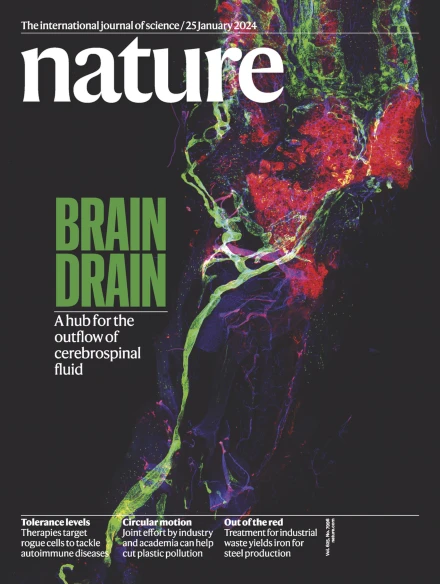为量子处理器学习高精度错误解码
IF 50.5
1区 综合性期刊
Q1 MULTIDISCIPLINARY SCIENCES
引用次数: 0
摘要
构建大型量子计算机需要有效的策略来纠正物理量子系统中不可避免地出现的错误1。量子纠错码2 通过将逻辑信息冗余地编码到许多物理量子比特中,为实现这一目标提供了一种方法。实现这类代码的一个关键挑战是准确解码从冗余检查中提取的噪声综合征信息,以获得正确的编码逻辑信息。在这里,我们开发了一种基于变压器的递归神经网络,它可以学习解码表面代码--领先的量子纠错代码3。我们的解码器在谷歌 Sycamore 量子处理器提供的实际数据中,对距离-3 和距离-5 的表面码解码效果优于其他最先进的解码器4。在距离达 11 的情况下,解码器利用软读出和泄漏信息,在包括串扰和泄漏在内的真实噪声模拟数据上保持了优势。在近似合成数据上进行训练后,解码器通过在有限的实验样本预算上进行训练,以适应更复杂但未知的底层误差分布。我们的工作说明了机器学习通过直接从数据中学习而超越人类设计的算法的能力,凸显了机器学习是量子计算机解码的有力竞争者。本文章由计算机程序翻译,如有差异,请以英文原文为准。


Learning high-accuracy error decoding for quantum processors
Building a large-scale quantum computer requires effective strategies to correct errors that inevitably arise in physical quantum systems1. Quantum error-correction codes2 present a way to reach this goal by encoding logical information redundantly into many physical qubits. A key challenge in implementing such codes is accurately decoding noisy syndrome information extracted from redundancy checks to obtain the correct encoded logical information. Here we develop a recurrent, transformer-based neural network that learns to decode the surface code, the leading quantum error-correction code3. Our decoder outperforms other state-of-the-art decoders on real-world data from Google’s Sycamore quantum processor for distance-3 and distance-5 surface codes4. On distances up to 11, the decoder maintains its advantage on simulated data with realistic noise including cross-talk and leakage, utilizing soft readouts and leakage information. After training on approximate synthetic data, the decoder adapts to the more complex, but unknown, underlying error distribution by training on a limited budget of experimental samples. Our work illustrates the ability of machine learning to go beyond human-designed algorithms by learning from data directly, highlighting machine learning as a strong contender for decoding in quantum computers. A recurrent, transformer-based neural network, called AlphaQubit, learns high-accuracy error decoding to suppress the errors that occur in quantum systems, opening the prospect of using neural-network decoders for real quantum hardware.
求助全文
通过发布文献求助,成功后即可免费获取论文全文。
去求助
来源期刊

Nature
综合性期刊-综合性期刊
CiteScore
90.00
自引率
1.20%
发文量
3652
审稿时长
3 months
期刊介绍:
Nature is a prestigious international journal that publishes peer-reviewed research in various scientific and technological fields. The selection of articles is based on criteria such as originality, importance, interdisciplinary relevance, timeliness, accessibility, elegance, and surprising conclusions. In addition to showcasing significant scientific advances, Nature delivers rapid, authoritative, insightful news, and interpretation of current and upcoming trends impacting science, scientists, and the broader public. The journal serves a dual purpose: firstly, to promptly share noteworthy scientific advances and foster discussions among scientists, and secondly, to ensure the swift dissemination of scientific results globally, emphasizing their significance for knowledge, culture, and daily life.
 求助内容:
求助内容: 应助结果提醒方式:
应助结果提醒方式:


